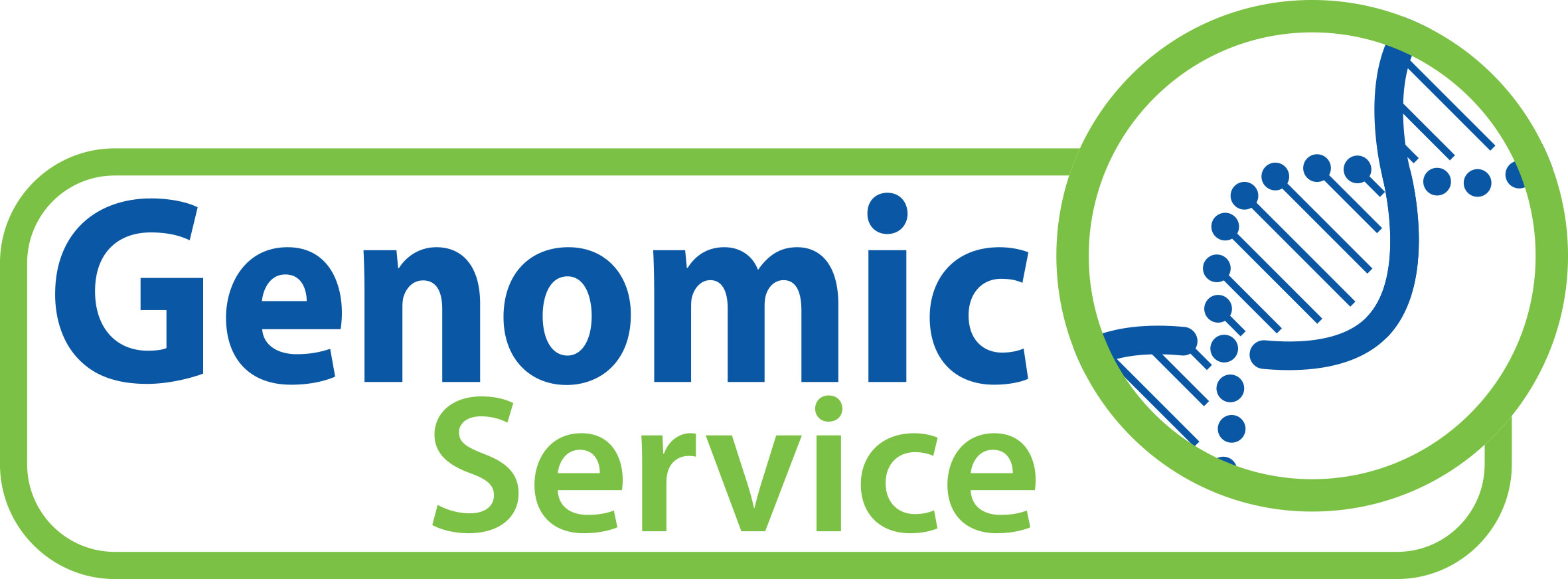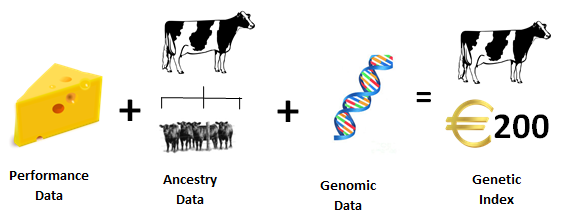
Genomics is breeding using DNA (Genotype) to help better predict how well an animal will perform in the future. DNA is passed from parents to offspring and is therefore central to breeding. The DNA profile of an animal is analysed (hair sample) and is compared to the DNA profiles of older proven animals also known as the reference population and looks for similarities. Performance data, Ancestry data and Genomic data are combined on the animal itself generating a more accurate prediction of the animal’s genetic make-up (Economic Breeding Index).

John O’Callaghan runs a pedigree dairy herd alongside his father near Bandon Co. Cork. The herd operate under the herd name Mountfarna. The Mountfarna herd was founded in 1970 and are milking 65 cows. John genotypes all his dairy females and males each year and now sees genotyping as routine and essential part of running his dairy business. In this short video clip, John outlines how this technology has helped him make better breeding and management decisions.
The Science of Genomics
The DNA is the building block of life and therefore DNA in combination with management (e.g., feeding) that determines the performance of the animal such as how much milk it will yield, its susceptibility to health and its fertility performance. The DNA of an individual remains the same throughout life. Therefore, by taking a hair sample from a newborn calf, its DNA profile can be determined and this can be used to predict the subsequent performance of the individual. Because DNA is transmitted from one generation to the next, the DNA of a calf (e.g. Potential bull) can also be used to predict the expected performance of its progeny.
How is the DNA analysed?
Genotypes are made up of Single Nucleotide Polymorphisms (SNPs). These are a DNA sequence variation occurring commonly within a population and each SNP represents a difference in a single DNA building block, called a nucleotide. Different variants are present and have different associations with performance.
The DNA is extracted from the hair follicles and analysed on a SNP Chip. DNA is transmitted in chunks and genomic testing then identifies which DNA chunks have been passed from the parents to its offspring. The genotype is studied to check parentage to confirm that the dam and sire recorded are correct. The genotype is then analysed on animal’s traits such as (milk production, carcass weight etc.)
Benefits of Genomics
Parent verification: A genotyped animal can have its Sire& Dam confirmed
Higher reliability EBI/Eurostar figures: Genotyping increases reliability% figures even before the animal has produced any offspring
Traceability: Genotyping ensures that from birth there is full traceability of every meat sample
Soon, genomics will allow farmers to avoid inbreeding using genomic mating’s, where relationships between animals are quantified at the genomic level. It will also be used to avoid genetic defects that could arise from mating cows to bulls that are known carriers of genetic defects.
Dairy Pricing
Cost of genotyping dairy females €22/head – reduced rate of €18/head only available for herds participating in Dairy Gene Ireland.
Why Genotype your Dairy Females?
What is Beef Genomics?
Animal Eligibility
The eligibility criteria for dairy animals to get a genomic evaluation are as follows:
• If the sum of all known breed percentages (HO, FR, RW, JE, MO, NR, AY, BS, SI, MY, SH, SR, KE, NO, RB, RD, MS) is greater or equal to 28 parts (87.5%) then the animal will be eligible for a genomic evaluation.
The eligibility criteria for beef animals to get a genomic evaluation are as follows:
• Animal is a beef breed
How the Genotyping process works?
- Herd-owner can order online by logging onto icbf.com or by calling ICBF on 023-8820452
- Herd-owner will receive hair card for DNA collection, hair sampling instructions and a freepost return envelope in the post.
- Hair follicles are pulled from the tail end of the individual animal and placed in the hair card.
- The sample is posted in the freepost return envelope to ICBF.
- The sample is scanned into the ICBF database and is dispatched to the Weatherbys laboratory every Wednesday.
- The sample is analysed in the laboratory and the data is automatically transmitted to the ICBF database
- The results are evaluated and published online.
How to Order a Genotype Online?
How to Track a Genotype Order?
How to view Dairy Genomic Results?
Dairy Genotyping Information
Genotyping Pricing
Genotyping Tracking Guide
How to order a Genotype


